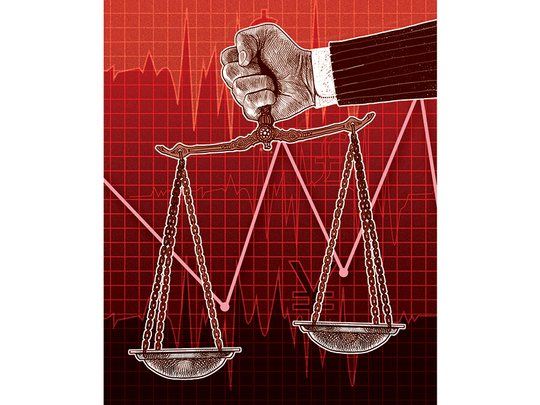
Inequality has become the subject of an intense debate in public media, policy-making and academia. In our view, it is key to understand that inequality is inherent in the functioning of market processes.
When it becomes persistent, however, it can harm growth. This risk is particularly high in developed markets where inequality within many countries is increasing. By contrast, inequality between countries globally is diminishing. Southern European countries and the US score relatively poorly in Morgan Stanley’s Inequality Indicator (MSII), which ranks 20 developed nations.
Growth itself is important for a country’s prosperity, but so is its distribution, a factor that is often overlooked. Inequality affects consumption and savings dynamics. Inequality is complex: it stems from a variety of factors, including random events, economies of scale and technological progress.
In turn, some of these changes have boosted demand for highly skilled workers.
Importantly, objective factors that drive inequality matter as well as subjective perceptions. These can vary with time, but they matter for they influence voters’ choices as well as possibly corrode social consensus. In turn, this could lead to policy mistakes — with potential backlashes via increased market regulation, protectionist and anti-immigration measures.
Measuring inequality is difficult. From an economic point of view, inequality of income, wealth and consumption are particularly relevant.
Moreover, its notion varies over time and is often linked to social factors, such as race, gender and culture. It has to do with differences in living standards that society considers desirable.
Inequality is multifaceted. A variety of factors has contributed to its widening in many industrial countries in recent years, including globalisation, an increasing wage gap between skilled and unskilled workers and rising wealth disparities, partly related to inheritance.
Furthermore, the divide between the older and the younger generations as well as the increasing divide within the same generation have also played a role. The younger generation is facing relatively higher job and pension insecurity and greater difficulties in accessing the property market.
Inequality within the same generation stems from structural labour market rigidities and a mismatch between the demand and supply of skills. Finally, the Great Recession and the financial crisis have exacerbated this trend.
Whilst the public inequality debate focuses largely on the eye-catching rich 1 per cent and redistributional policies, it omits that inequality is the side effect of dynamic processes such as innovation and social mobility. Indeed, evidence of the impact of inequality on economic growth is not clear-cut.
Moreover, by focusing largely on the effect of technological advancements on the labour market — by either substituting individual jobs with increased automation or widening the wage gap between skilled and unskilled labour — the debate understates the progress that technology has brought via better living standards, and broader availability, accessibility and affordability of goods and services.
For instance, progress in the telecommunications and the automotive sectors, in particular, has enhanced growth inclusiveness by reducing consumption inequalities.
Inequality can undermine economic growth and social cohesion when it becomes entrenched though. In particular, if inequality leads to predetermination of individuals’ position in the income and wealth distribution independent of their efforts, it can block opportunities. It will then undermine incentives to work hard, get a good education and improve skills.
It is in this case that inequality could negatively affect economic growth through a variety of channels, for example by lowering investment, especially in human capital, and disrupting business models. Our research highlights how with the developed market middle-class increasingly splitting into upper and lower tier, market segments are becoming more bifurcated, such as in the leisure, retail, health care, consumer staples and airline sectors.
Our MSII ranks Portugal, Italy, Greece, Spain and the US among the top five countries with the poorest inequality score among 20 OECD countries that we have analysed. In our ranking, we complement traditional inequality measures, such as the Gini coefficients, with other indicators, especially on labour market participation but also health status and digital access.
When assessing inequality changes since the mid-1980s, however, the surprise is in the Nordic countries, particularly Sweden, which has experienced some of the largest increases in inequality, albeit retaining a comparatively low score.
Interestingly, the top five countries that score poorly in the MSII are also those that have witnessed a marked increase of support for non-mainstream parties in recent years, boosting political fragmentation. In our view, centrifugal forces seem to be gaining momentum again, testing countries’ willingness and ability to tackle structural problems.
In particular, the increasing penetration of the sharing economy, rising migration flows and further technological progress create growth opportunities, but also have the potential to widen inequalities and exacerbate political tensions.
Therefore signs of reform fatigue, social unrest and political discontent should be closely monitored.
Elga Bartsch is European Chief Economist at Morgan Stanley while Carmen Nuzzo is Senior Economist.












